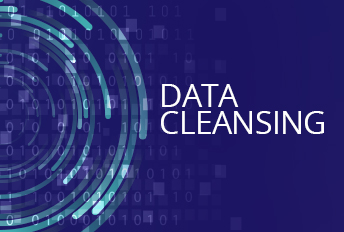With each passing hour, there’s an increase in the amount of data available to us. With the rise in the volume of data comes heightened error potentialities. Hence, it becomes imperative to prioritize data cleansing.
Data cleansing is not the most exciting duty to mark off your Trello to-do list. However, it pays off in the long run. For one, data cleansing improves the integrity and relevance of your data. Data cleansing ensures that all inconsistencies are eliminated.
When data cleansing is done correctly and frequently, your company will make better decisions. So, if you’re new to the idea of data cleansing, this guide helps you understand the basics and the data solutions.
What Is Data Cleansing?
Data cleansing involves the identification and resolution of corrupt, irrelevant, and inaccurate data. The cleansing process is a fundamental part of data processing, with the ultimate goal of achieving a reliable, consistent, and valuable database.
Examples of inconsistencies responsible for reducing a data set’s value include; missing values, typographic errors, and misplaced entries. During the data cleansing process, missing values are filled in, typo errors are corrected, and misplaced entries are rectified.
Every industry requires that data sets be accurate and reliable. The issue of accuracy is even more emphasized in the firmographic data industry. Unclean data – otherwise known as dirty data – pose adverse effects to your business. In the US, messy data results in about $3 trillion loss annually.
Importance Of Cleansed Data
Decision-making in today’s business ecosystem is heavily premised on data. Consequently, the better the data, the better the decision being made. To inform decisions, companies leverage various channels. Unfortunately, the multiple streams of data result in a clumsy pool of information. Data cleansing eliminates the dirt, and companies have the following to show for it.
Better Decision Making
Data quality directly influences the quality of decisions being made. The insights from data are used to determine what services a company should focus on, what audience to target, etc. Data is also relevant in the development of strategies. If information is compromised, your company can waste time and resources working on the wrong things.
Heightened Efficiency
The longer it takes your company to get things right, the lower you fall in relevance. The world is currently very fast-paced. Hence, your company can’t waste time dwelling on the wrong things. When data is properly cleansed, efficiency is assured.
The efficiency that comes with data cleansing isn’t evident only in external activities. Data cleansing helps achieve better in-house efficiency. For instance, your company can leverage insights from its data pool to understand how productive a particular employee is.
Staying Competitive
User behavior is one of the most inconsistent elements in today’s business landscape. User needs and requirements change fast. Hence, a company that wants to stay competitive focuses on optimizing its data pool. Your business must have untethered access to reliable and accurate insight in real-time to stay ahead of the curve.
When your data pool is pristine, your business gets better at identifying rising trends in consumer needs. Also, your company becomes better at responding to needs, reaching new prospects, and improving user experience.
How To Cleanse Your Data
Several data cleaning solutions exist; however, they don’t solve the whole problem. Data cleansing is somewhat of a never-ending process; data gets added per time. Owing to this, human intervention remains relevant, and it follows the following steps:
Identification of Critical Data Fields
Data cleansing is vital, ensuring that only relevant data remains in the database. Hence, you should note the data fields core to projects or company needs.
Data Collection
Upon identifying required data fields, follow up with the collection, sorting, and organization of the data therein.
Removal of Duplicate Data Values
Duplicate data is rampant in databases. Hence, after data collection is complete, the resolution of inaccuracies is next. Remove duplicate data values.
Resolution of Empty Data Sets
Missing values need to be resolved. Ensure that these values are filled in to ensure your data set’s completion.
Standardization of the Cleaning Process
Consistency in standards is vital. When you ensure a minimum threshold, it becomes easier to replicate your data cleansing process. To achieve this, identify frequently used data and the time they are needed. Also, It would be best if you also designated the personnel responsible for the maintenance. Finally, company-wide, it’s best to have an agreed data cleansing frequency.
Revision, Adaptation, and Reiteration
The data cleansing process should also be subject to frequent reviews. In these review sessions, you get to figure out what’s working and what needs to be improved.
Examples Of Data Cleansing Solutions
As an enterprise, automating processes is the right way to go. And since data cleansing isn’t the most enjoyable work anyway, here are some data cleaning solutions you can employ.
- Data Ladder
- IBM InfoSphere
- WinPure
- Cloudingo
- SAS Data Management
Conclusion
Data cleansing solutions are vital tools for companies with large data pools. Investing in these tools becomes imperative as they save cost and ensure efficiency. In the long run, the results of leveraging these tools will reflect your company’s year-on-year revenue growth.
Follow Technoroll for more!
Editorial Staff of the TechnoRoll, are a bunch of Tech Writers, who are writing on the trending topics related to technology news and gadgets reviews.



